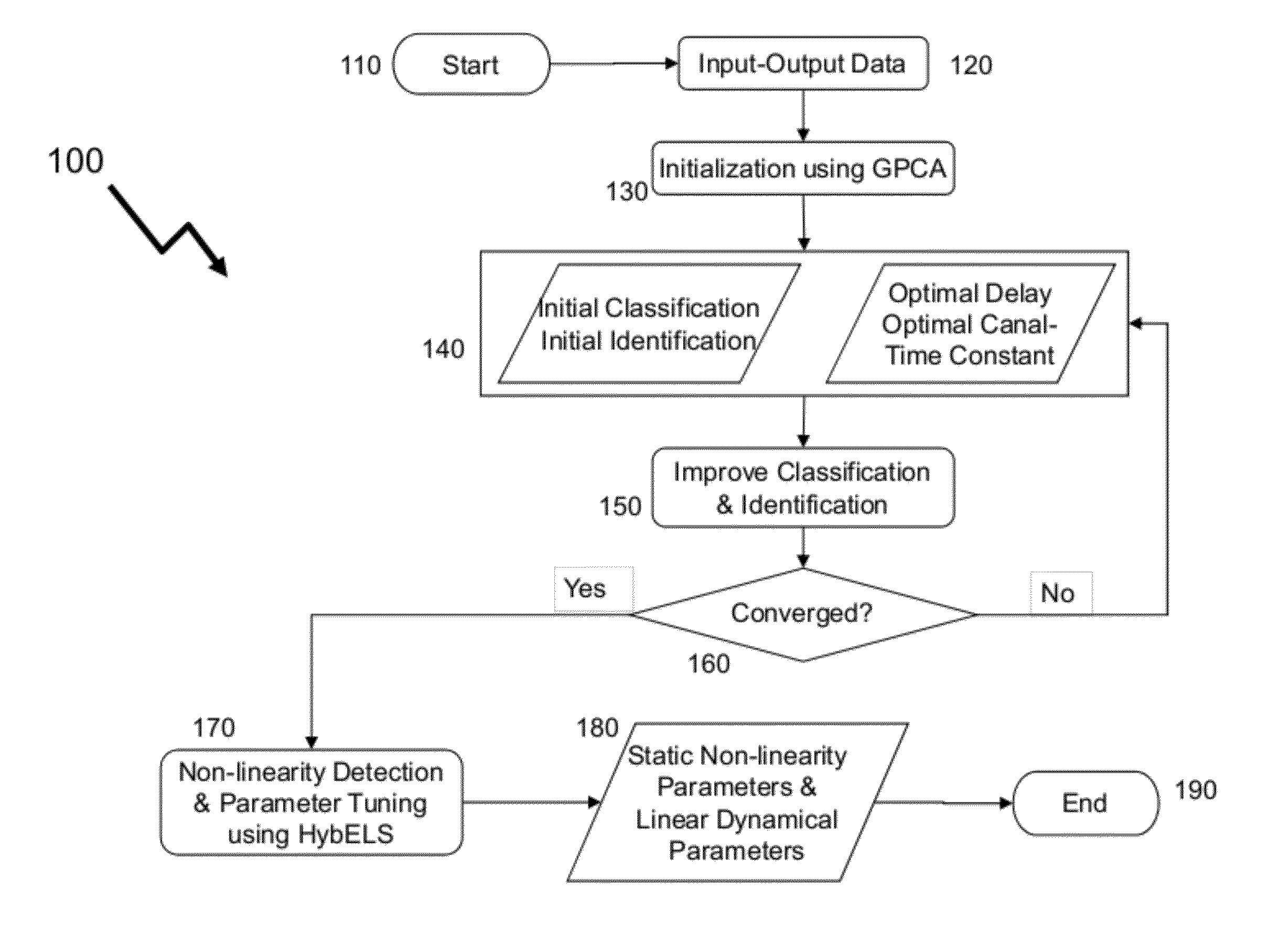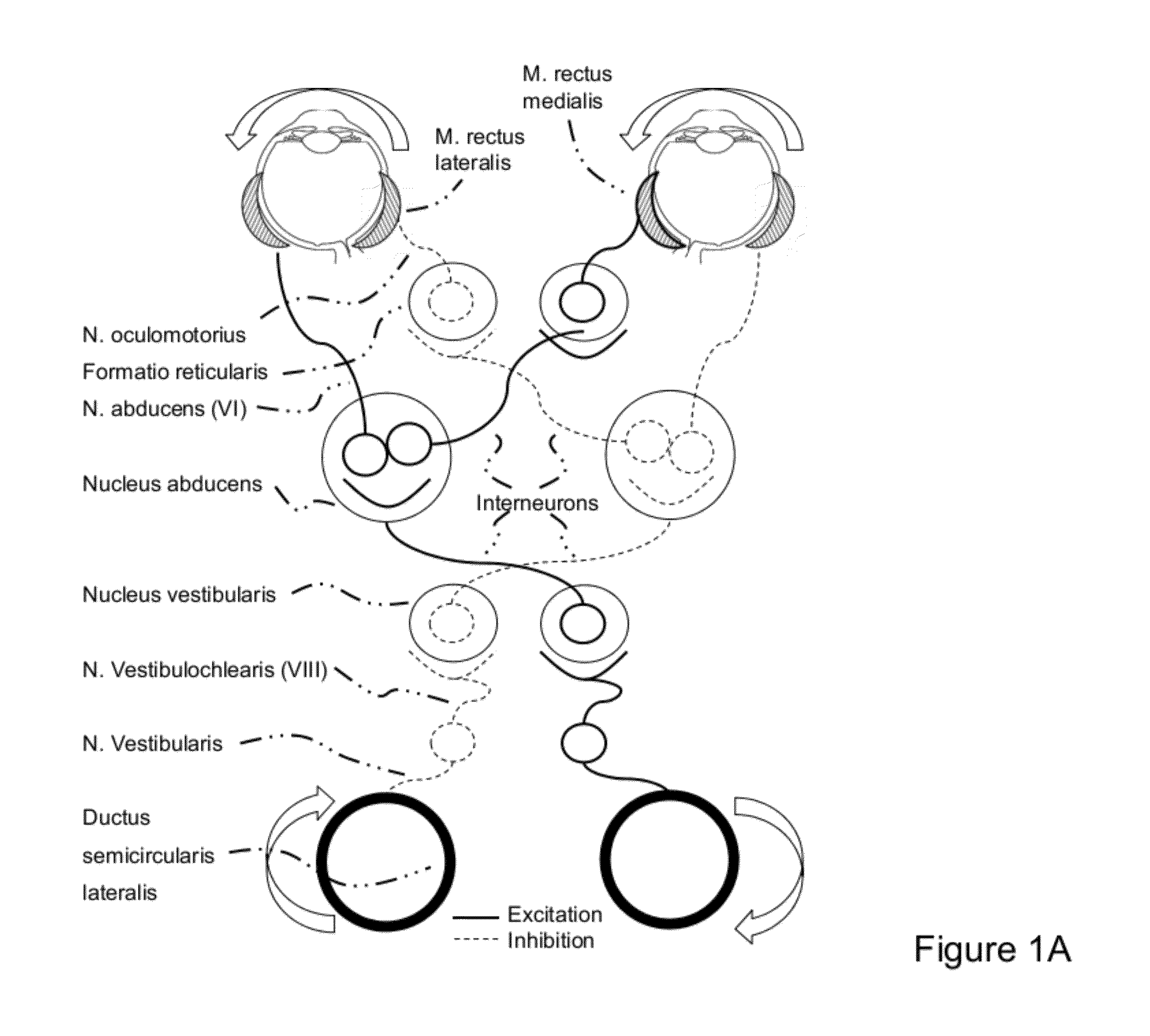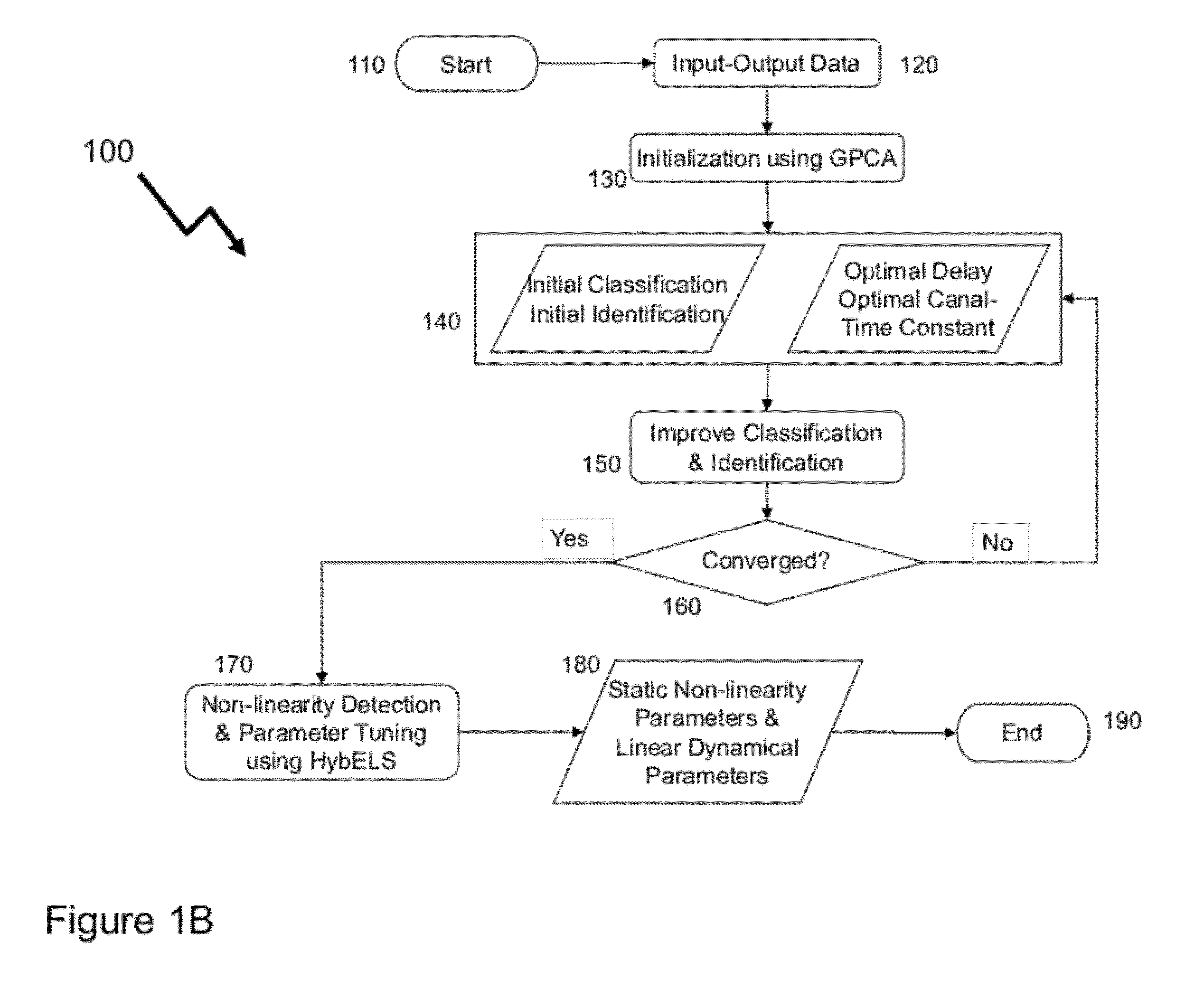Method and System for Automatically Classifying and Identifying Vestibulo-Ocular Responses
a technology of automatic classification and identifying, applied in the field of vestibulo-ocular responses, can solve the problems of unstable visual system, double vision, retina with a very high visual acuity,
- Summary
- Abstract
- Description
- Claims
- Application Information
AI Technical Summary
Benefits of technology
Problems solved by technology
Method used
Image
Examples
Embodiment Construction
[0074]The present invention is directed to vestibulo-ocular responses and more specifically to the processing of vestibulo-ocular responses for automatic classification / analysis, diagnosis and control within humans, animals and robotic systems.
[0075]The ensuing description provides exemplary embodiment(s) only, and is not intended to limit the scope, applicability or configuration of the disclosure. Rather, the ensuing description of the exemplary embodiment(s) will provide those skilled in the art with an enabling description for implementing an exemplary embodiment. It being understood that various changes may be made in the function and arrangement of elements without departing from the spirit and scope as set forth in the appended claims. While the invention is presented with respect to the angular VOR in the horizontal plane, it can be apply to any nystagmus or hybrid response, whether biological or engineered.
[0076]Referring to FIG. 1A there is depicted a schematic of the VOR ...
PUM
 Login to View More
Login to View More Abstract
Description
Claims
Application Information
 Login to View More
Login to View More - R&D
- Intellectual Property
- Life Sciences
- Materials
- Tech Scout
- Unparalleled Data Quality
- Higher Quality Content
- 60% Fewer Hallucinations
Browse by: Latest US Patents, China's latest patents, Technical Efficacy Thesaurus, Application Domain, Technology Topic, Popular Technical Reports.
© 2025 PatSnap. All rights reserved.Legal|Privacy policy|Modern Slavery Act Transparency Statement|Sitemap|About US| Contact US: help@patsnap.com



